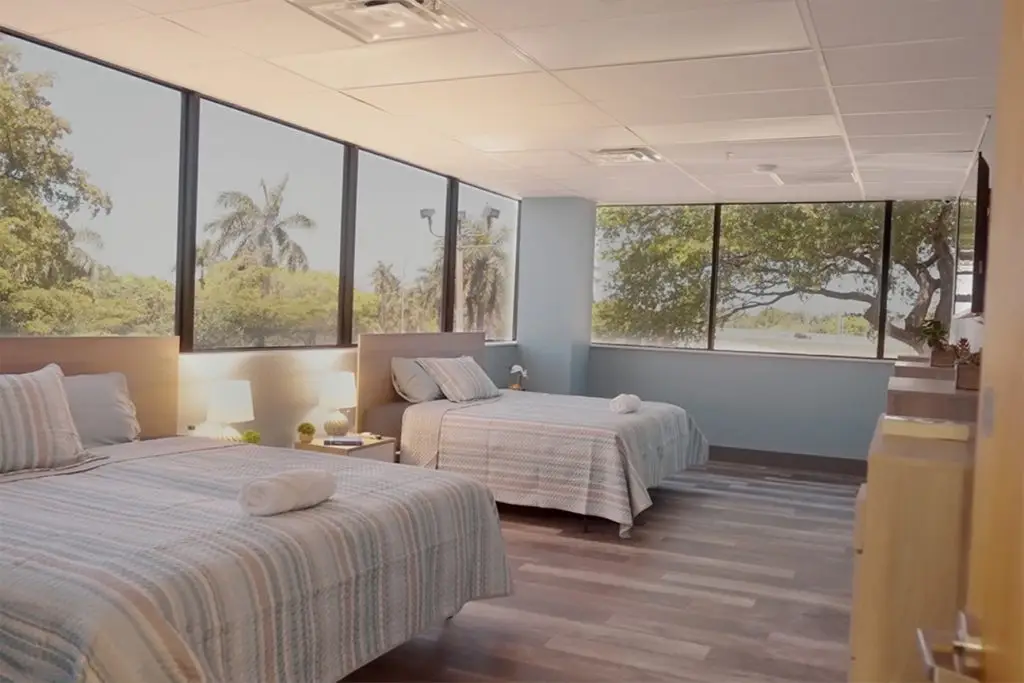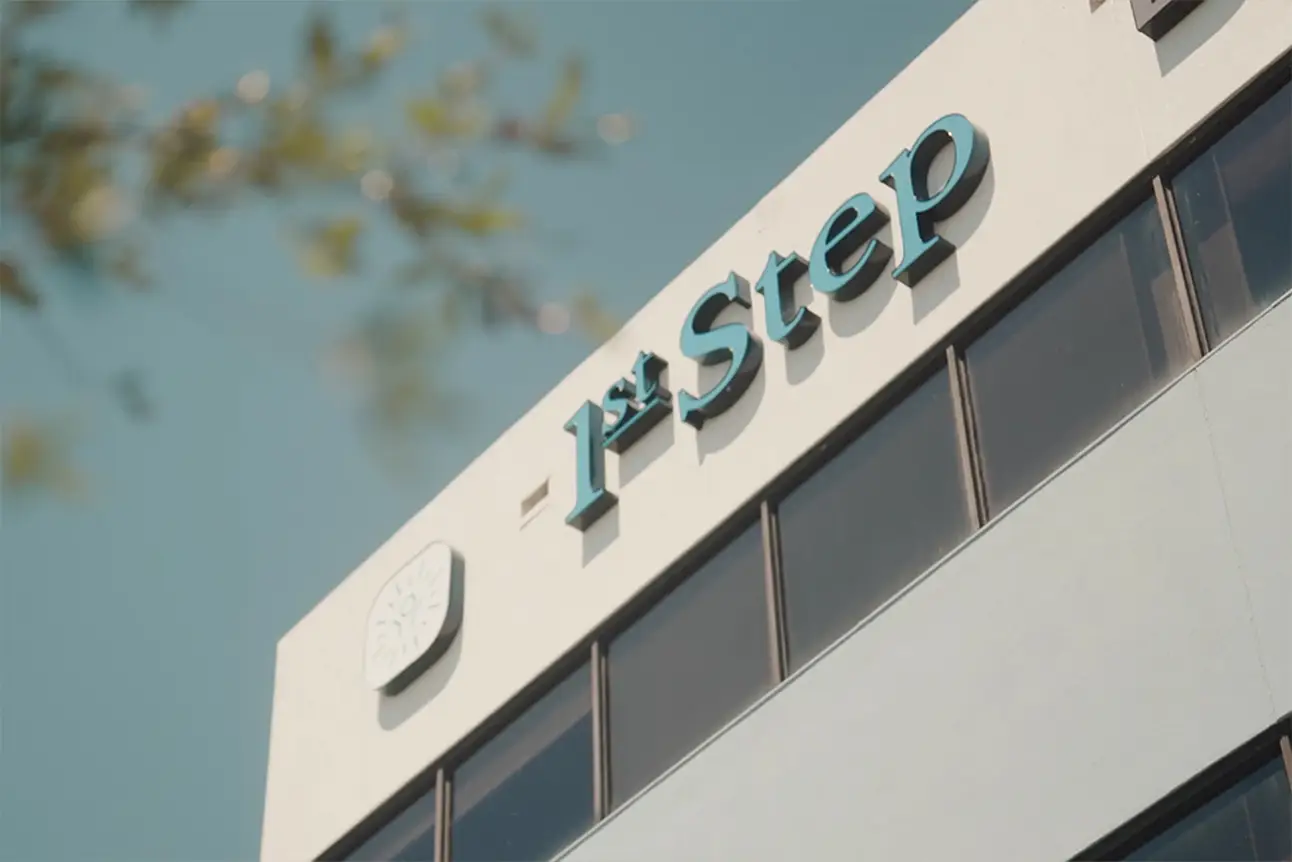Schizoaffective Disorder Treatment


Schizoaffective disorder is a complex and often misunderstood mental health condition that combines features of both mood disorders and psychotic disorders. It involves episodes of mood disturbance along with hallucinations, delusions, or disorganized thinking, even during periods when mood symptoms are not present.
For individuals in Pompano Beach seeking help, understanding the condition, its symptoms, causes, and treatment options can be the first step toward recovery. With proper care, people diagnosed with schizoaffective disorder can lead stable and fulfilling lives.
At 1st Step Behavioral Health, we help clients overcome schizoaffective disorder using evidence-based treatment methods. Our program is designed to ensure clients learn how to manage their symptoms through therapy and medication management. If you or a loved one suffers from this condition, our treatment center is here to help.
What is Schizoaffective Disorder?
Schizoaffective disorder is a psychiatric condition that presents with both psychotic symptoms—such as hallucinations or delusions—and mood disorder symptoms, like mania or depression. It bridges the gap between two major psychiatric disorders: schizophrenia and bipolar disorder (or, in some cases, major depressive disorder).
According to the Diagnostic and Statistical Manual of Mental Disorders (DSM-5), published by the American Psychiatric Association, schizoaffective disorder is diagnosed when a person experiences a mood episode (depressive or manic) concurrent with psychotic symptoms, but also shows psychosis during periods without mood symptoms.[1] This differentiates it from other mental disorders such as schizophrenia or bipolar disorder alone.
Symptoms of Schizoaffective Disorder
The symptoms of schizoaffective disorder can vary significantly between individuals but usually include a combination of psychotic symptoms and mood symptoms.
The psychotic symptoms associated with schizoaffective disorder include:[2]
- Hallucinations (typically auditory)
- Delusions (often paranoid or grandiose)
- Disorganized speech
- Impaired cognitive functioning
The mood symptoms common among people with schizoaffective disorder include:[2]
- Depressive symptoms such as persistent sadness, hopelessness, or changes in appetite and sleep
- Manic symptoms like increased energy, decreased need for sleep, grandiosity, or impulsive behavior
- Emotional instability and social isolation
The presence and severity of these symptoms can fluctuate, making early diagnosis and long-term monitoring essential for effective treatment.

Causes and Risk Factors
The exact cause of schizoaffective disorder is not known, but research suggests a combination of genetic, biochemical, and environmental factors may contribute:
- Genetics: A family history of schizophrenia, bipolar disorder, or affective disorders can increase risk.
- Brain chemistry: Imbalances in neurotransmitters like dopamine and serotonin are linked to psychiatric disorders.
- Environmental factors: Stress, trauma, and substance abuse (especially cannabis and hallucinogens) may trigger or worsen symptoms.
- Other mental health conditions: Individuals with a history of mood disorders or psychotic disorders are at higher risk.
Simply meeting the risk factors does not mean you have schizoaffective disorder. That said, if you believe you are experiencing the symptoms you should reach out to a mental health professional to have a psychiatric evaluation. These tests allow professionals to diagnose you with the condition and create a personalized treatment plan based on your needs.
Diagnosing Schizoaffective Disorder
To diagnose schizoaffective disorder, a qualified mental health professional conducts a comprehensive evaluation that includes:
- Clinical interview and psychiatric history
- Assessment of mood symptoms and psychotic symptoms
- Rule out of other mental health conditions through differential diagnosis
- Use of standardized diagnostic tools based on the DSM-5
The distinction between schizoaffective disorder and other psychotic illnesses such as chronic schizophrenia or bipolar type disorders is critical in crafting an effective treatment plan.

Treatment of Schizoaffective Disorder in Pompano Beach
Treating schizoaffective disorder requires an individualized treatment plan that addresses both psychotic and mood symptoms. Mental health providers in Pompano Beach typically use a combination of medication, therapy, and supportive services to manage symptoms and improve the patient’s life.
1. Medication Management
The cornerstone of schizoaffective disorder treatment is drug treatment aimed at stabilizing mood and reducing psychosis:
- Antipsychotic drugs: Medications like risperidone, olanzapine, or clozapine therapy are commonly used to manage hallucinations and delusions.
- Mood stabilizers: Lithium and valproate help control bipolar and schizoaffective disorders involving manic episodes.
- Antidepressant drugs: Selective serotonin reuptake inhibitors (SSRIs) and tricyclic antidepressants may be used for major depressive disorder or depressive subtype symptoms.
2. Psychotherapy
Talk therapy, also called individual therapy, can be highly effective in helping patients cope with their diagnosis:
- Cognitive Behavioral Therapy (CBT): Cognitive behavioral therapy helps patients challenge distorted beliefs and improve emotional regulation.
- Group therapy: Provides social support and reduces social isolation.
- Family therapy and family intervention: Educates family members about the disorder and improves communication and crisis management.
3. Holistic and Supportive Services
Holistic care can be used in combination with therapy and medication to increase a patient’s overall wellbeing. Ecamples of holistic services used during schizoaffective disorder treatment include:
- Case management to coordinate psychiatric and medical care
- Employment or vocational training
- Support groups and community engagement
- Treatment for substance use disorder or other co-occurring disorders, if present
Why Early and Accurate Diagnosis Matters
Early diagnosis and continuous care significantly improve the prognosis of patients with schizoaffective disorder. Untreated, the condition can lead to:
- Worsening symptoms
- Hospitalizations
- Disruption in relationships and employment
- Co-occurring substance abuse or other mental disorders
With the right treatment for schizoaffective disorder, individuals can experience symptom relief and regain functionality.
Why Choose 1st Step Behavioral Health for Schizoaffective Disorder Care in Pompano Beach
When seeking treatment for a complex mental health condition like Schizoaffective Disorder, choosing the right facility makes all the difference. Here’s why 1st Step Behavioral Health in Pompano Beach stands out for effective, compassionate care:
Holistic Dual‑Diagnosis Expertise
1st Step is a licensed and Joint Commission‑accredited facility that specializes in treating individuals with both primary mental health conditions and co‑occurring disorders. Because schizoaffective disorder involves overlapping mood symptoms (e.g., from a mood disorder) and psychotic symptoms (e.g., from schizophrenia or schizoaffective psychoses), this kind of dual‑diagnosis expertise is especially appropriate.
Individualized Treatment Plans
The team at 1st Step emphasizes that no two patients with schizoaffective disorder are alike. They focus on designing individualized treatment plans that take into account each person’s unique history of mood symptoms, psychotic symptoms, substance use, and life factors.
For someone with schizoaffective disorder, this means the treatment plan will address not just the psychotic illness but also the mood dysregulation, depressive symptoms, manic/hypomanic episodes, and any substance use issues.
Integrated Medication and Therapy Services
Effective treatment of schizoaffective disorder typically involves a combination of medication (such as antipsychotic drugs, mood stabilizers, or antidepressant drugs) and structured therapy (talk therapy, family therapy, group therapy).
At 1st Step, the multidisciplinary staff includes psychiatrists, nurse practitioners, and licensed therapists working together to deliver medication‑management and psychotherapy under one roof. This integration helps ensure that both the psychotic and mood disorder components are treated in tandem.
Continuum of Care and Aftercare Support
Schizoaffective disorder is a chronic condition that often requires ongoing support to manage residual symptoms, monitor for worsening symptoms, avoid relapse, and improve cognitive functioning and day‑to‑day quality of life.
1st Step offers a full continuum of care — from residential treatment to intensive outpatient programs (IOP) and after‑care planning — so patients have a pathway to long‑term stability. This is key when working with mood symptoms and psychotic symptoms together, rather than treating them as isolated issues.
Family and Community Involvement
Recovering from schizoaffective disorder isn’t just about treating the individual — it often includes educating and involving family members, providing family intervention and therapy, and fostering a community of support. The 1st Step approach includes family therapy and a recovery‑oriented community environment, which can reduce social isolation and improve outcomes for patients.
Accessible Location in South Florida
Located in Pompano Beach, Florida, 1st Step offers convenient access for individuals residing in the Broward County region who are seeking high‑quality mental health care for schizoaffective disorder. The physical environment and locality can matter — it allows for easier family involvement, outpatient transitions, and consistent follow‑up.
Get Connected to Schizoaffective Disorder Treatment in Pompano Beach
Schizoaffective disorder is not a life sentence—it’s a manageable mental health condition with a well-established path to recovery. Whether you or a loved one has been recently diagnosed or struggling with persistent symptoms, seeking help in Pompano Beach can mark the turning point toward healing.
By combining medical treatment, psychotherapy, and social support, providers can treat schizoaffective disorder effectively and help individuals reclaim their lives. Contact 1st Step Behavioral Health for more information on how we can help you recover from schizoaffective disorder.
Frequently Asked Questions (FAQ)
1. Is schizoaffective disorder the same as schizophrenia or bipolar disorder?
No. While schizoaffective disorder shares characteristics with both schizophrenia and bipolar disorder, it is a distinct condition. People with schizoaffective disorder experience symptoms of psychosis (e.g., delusions or hallucinations) in combination with mood episodes, but the psychotic symptoms can also occur independently of mood shifts. This is different from bipolar disorder with psychotic features, where psychosis only appears during mood episodes, and from schizophrenia, where mood symptoms are either absent or not prominent.
2. How long does treatment for schizoaffective disorder typically last?
Schizoaffective disorder is a chronic psychiatric disorder, meaning it often requires long-term treatment. While some individuals may stabilize with consistent care, others may need ongoing therapy and medication management throughout their lives. The goal is to reduce severe symptoms, prevent relapse, and improve the individual’s ability to function in daily life.
3. Can someone with schizoaffective disorder work or go to school?
Yes, many patients treated for schizoaffective disorder can return to school, work, or other meaningful activities — especially with the help of individual therapy, vocational training, and supportive services. A key part of recovery involves developing coping strategies, improving cognitive functioning, and managing residual symptoms through consistent follow-up care and community support.
4. What happens during a psychiatric evaluation for schizoaffective disorder?
A psychiatric evaluation for schizoaffective disorder typically includes a comprehensive clinical interview, psychological assessments, a review of personal and family mental health history, and screening for substance use disorder or other mental disorders. The clinician will assess whether the individual meets diagnostic criteria based on the Diagnostic and Statistical Manual (DSM-5). This often includes differentiating between affective and schizoaffective disorders through a differential diagnosis process.
5. Is hospitalization ever required?
Yes, in some cases. When worsening symptoms pose a risk to the individual or others, or if the person is unable to care for themselves due to the severity of their condition, inpatient care may be necessary. Hospitalization can provide a safe environment for stabilization, medication adjustments, and crisis intervention. After stabilization, many patients transition to outpatient care or intensive outpatient programs for continued support.
6. Are there alternatives to medication for treating schizoaffective disorder?
While antipsychotic drugs, mood stabilizers, and antidepressant drugs are typically essential in treating schizoaffective disorder, therapy and lifestyle interventions also play critical roles. Some individuals benefit from group therapy, family therapy, psychoeducation, and wellness strategies like mindfulness, structured routines, and nutrition. However, medication remains the foundation of treatment, especially in managing psychotic symptoms.
References:
- APA PsycNet: The neurobiology of schizoaffective disorder.
- Merck Manuals: Schizoaffective Disorder – Psychiatric Disorders
Get Help From Our Schizoaffective Disorder Treatment Program in Pompano Beach, FL
At 1st Step Behavioral Health, we take a holistic approach to schizoaffective disorder treatment, helping individuals improve all areas of their lives using individualized care. Learn more about your treatment options by speaking with a mental health specialist. You can contact us by dialing or texting (855) 425-4846.
